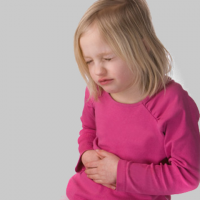The scheme of treatment of bronchitis in children

The incidence of acute and chronic bronchitis in children today is more than 90% of the total incidence of the respiratory tract. In most cases, bronchitis develops as a consequence of acute respiratory disease. Also, various viral infections can cause bronchitis in children in more than 80% of cases. The modern scheme of treatment of acute bronchitis in children is set out below.
The main cause of bronchitis in children
The most common cause of bronchitis in children is an infection of the flu, as well as MS infection. Other bronchitis causes various bacterial infections. Recently, there has been an increase in the incidence of acute bronchitis among children. The causative agents of the disease are more often atypical. These are chlamydia and mycoplasma, which was never previously characteristic of this disease. Doctors say that infections of this type are very dangerous and require specialized methods of diagnosis and timely treatment.
Symptoms of acute bronchitis against the background of acute respiratory infections
Acute bronchitis against a background of acute viral infections in most cases does not require specific treatment. The main direction of treatment in such cases is the control of the main symptoms of the disease and the general care of the child during the period of exacerbation.
The most frequent symptoms of acute bronchitis in children are an increase in overall body temperature, a strong cough, a feeling of constant fatigue. The same symptoms are typical for children of most cases of common cold. It is important to note, however, that in the case of an uncomplicated course of acute bronchitis, an increase in overall body temperature and a feeling of fatigue is moderate. In severe forms of acute respiratory viral infection, the child is in a more serious condition.
Treatment Scheme
Treatment of acute bronchitis in children is mostly symptomatic. The modern scheme of treatment of children's bronchitis against the background of ARVI in itself includes:
- general care for a sick child;
- decrease in overall body temperature;
- treatment of coughing attacks;
- treatment of bronchitis by folk methods.
The use of various antibiotics for acute bronchitis in children is justified only in the case of its proven bacterial nature. Most often, the presence of bacterial infection gives the following symptoms: the second wave of a sharp rise in body temperature( on the 5th-7th day of the course of the disease), the appearance of purulent sputum, a marked deterioration in the overall condition of the child.
What to look for
In some cases, acute bronchitis in children can cause serious complications( bronchiolitis and pneumonia).Treatment at home in this case should be discontinued, and the child should be urgently hospitalized. Parents should know some signs indicating an unfavorable course of the illness and an urgent need to seek medical help from a doctor:
- body temperature above 380C for 3-4 days and worsening the general condition of the patient;
- severe dyspnea: in newborns and children up to two months more than 60 breaths per minute, in children from three months to a year 50 and more breaths per minute, in children from one to three years - more than 40 breaths per minute;
- is a well visible contraction of the skin in intercostal spaces at the time of inspiration;
Reception of antibiotics for acute bronchitis
This question should in any case be decided by the attending physician. Taking antibiotics without special need can be much more harmful for a child than rejecting them in cases when taking these medications is recommended. In the treatment of acute bronchitis in children, antibiotics are rarely used and only for the doctor's prescription. The reason for going to the doctor in such cases may be external signs of bacterial infection, which were mentioned above.
Due to the increase in childhood morbidity of mycoplasmal and chlamydial bronchitis in children, in addition to classical antibiotics( penicillin and cephalosporin), antibiotics of the macrolide group: azithromycin and erythromycin began to be used. The type of antibiotics, their dose and method of administration should always be determined by the attending physician.



